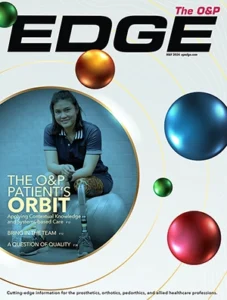A team of researchers led by Patricia Kluding, PT, PhD, University of Kansas Medical Center, Kansas City, Department of Physical Therapy and Rehabilitation Sciences, completed a clinical trial that concluded that either an AFO or a foot drop stimulator (FDS) yielded clinically and statistically significant improvements in gait speed and other functional outcomes among people after a stroke.
The multicenter, randomized, single-blinded trial compared FDS and AFO usage for foot drop in 197 people whose stroke occurred at least three months prior and whose gait speed was no more than 0.8 meters per second (m/s). The cohort comprised 79 women and 118 men with an average age of 61.14. Their strokes had occurred 4.55 years prior, on average.
The participants were randomly assigned to use either a standard AFO or FDS for 30 weeks. Eight dose-matched physical therapy sessions were provided to both groups during the first six weeks of the trial. The results showed measurable improvement within both groups in comfortable gait speed and fast gait speed. No significant differences in gait speed were found in the between-group comparisons. Secondary outcomes (standard measures of body structure and function, activity, and participation) also improved in both groups, however user satisfaction was significantly higher in the FDS group than in the control group.
More details about the study,
Foot Drop Stimulation Versus Ankle Foot Orthosis after Stroke, can be found in the May 2013 issue of the journal Stroke.




